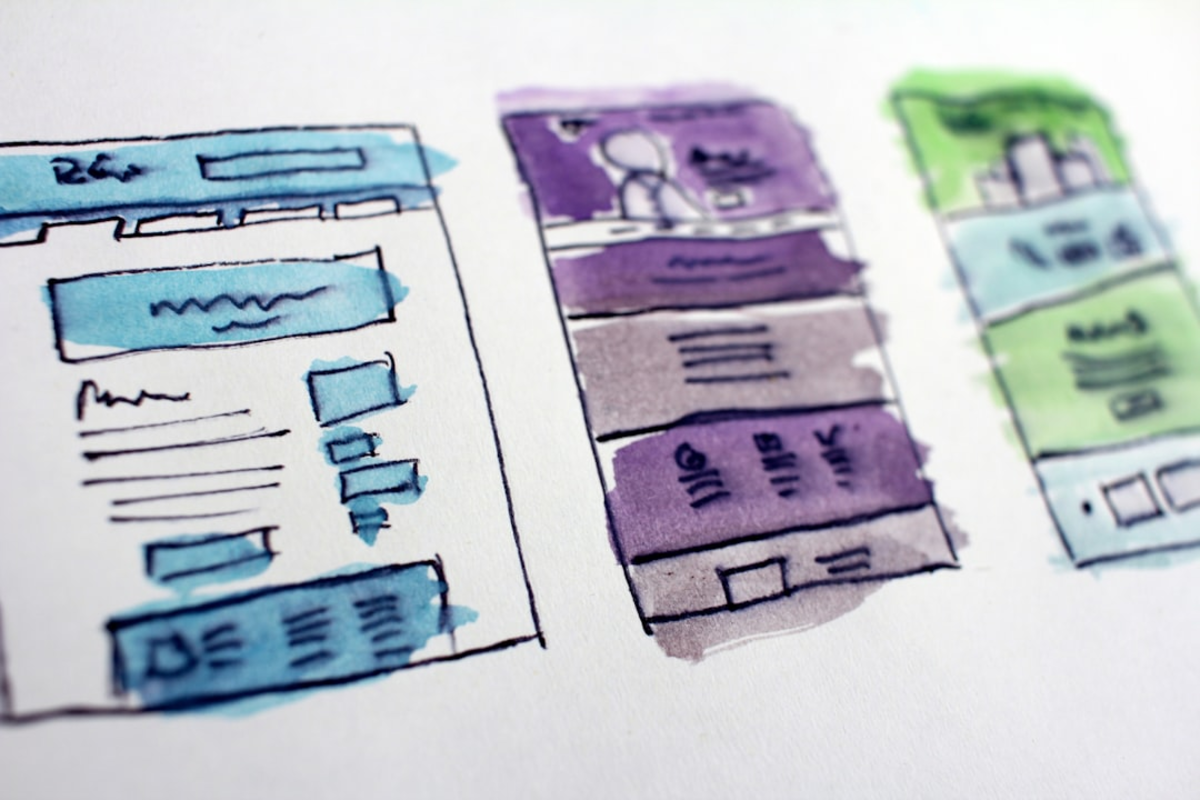Revolutionize Your Site: Top Website Design Tips and Trends for 2025

As we navigate further into the digital age, the landscape of website design is in a perpetual state of dynamic evolution, constantly reshaped by technological advancements, shifting user expectations, and emerging aesthetic sensibilities. For businesses and creators aiming to captivate audiences and maintain a competitive edge, staying abreast of these changes is not just beneficial but essential. The year 2025 promises to be a pivotal moment, heralding a new wave of innovative design trends and refined best practices that will redefine how users interact with online platforms. This article delves into the top website design tips and trends poised to revolutionize your site in 2025, offering actionable insights to help you create digital experiences that are not only visually stunning but also deeply engaging, intuitively functional, and thoughtfully inclusive. We will explore how artificial intelligence is becoming increasingly integrated into UX personalization, how immersive technologies like augmented reality are beginning to find their footing on the web, and how the demand for more ethical, sustainable, and accessible design practices is growing stronger. Furthermore, we'll examine the evolution of visual elements, from bold typography and sophisticated color palettes to the increasing use of interactive 3D graphics and motion design that tells a story. The focus is shifting beyond mere aesthetics towards creating holistic experiences that resonate with users on an emotional level, fostering connection and building lasting brand loyalty. We will also discuss the enduring importance of core design principles such as mobile-first optimization, lightning-fast performance, and intuitive navigation, which remain foundational even as flashier trends emerge. Understanding and strategically implementing these cutting-edge tips and prevailing trends will empower you to transform your website from a static digital brochure into a vibrant, interactive hub that not only meets the sophisticated demands of 2025's users but also anticipates future shifts, ensuring your online presence remains relevant, impactful, and ahead of the curve in an increasingly crowded digital space. Prepare to revolutionize your site by embracing these forward-thinking concepts that prioritize user delight, seamless functionality, and meaningful engagement, setting a new standard for digital excellence.
Immersive Experiences: AI-Driven Personalization, Microinteractions, and Advanced Animations
The quest for deeper user engagement in 2025 is propelling website design towards more immersive and interactive experiences, largely driven by advancements in artificial intelligence (AI) and a refined understanding of user psychology. AI-driven personalization is set to become a cornerstone of sophisticated web design, moving beyond basic name tokenization to offer truly tailored content, product recommendations, and user interface adjustments based on individual behavior, preferences, and historical data. Imagine websites that dynamically reconfigure their layout or highlight specific information that an AI algorithm predicts will be most relevant to the current visitor, creating a uniquely personal journey for each user. This level of customization fosters a stronger sense of connection and can significantly boost conversion rates by anticipating user needs proactively. Complementing this personalization are
microinteractions
, which, though small, pack a powerful punch in enhancing user experience. These are subtle animations or visual feedback cues that respond to user actions – a button that subtly changes shape upon hover, a satisfying checkmark animation upon form submission, or a gentle loading spinner that provides reassurance. In 2025, microinteractions will become more nuanced and context-aware, contributing to a feeling of a polished, responsive, and delightful interface that acknowledges and reacts to the user in a human-like way.
Advanced animations and motion design
are also taking center stage, evolving from purely decorative elements to integral components of storytelling and user guidance. Parallax scrolling, sophisticated page transitions, and animated infographics can transform a static page into a dynamic narrative, capturing attention and making complex information more digestible and engaging. However, the key in 2025 will be purposeful animation – motion that serves a clear function, whether it's to draw attention to a key call-to-action, illustrate a process, or simply add an element of joy without overwhelming the user or hindering performance. The integration of
interactive 3D elements
will also continue to grow, allowing users to explore products from all angles or navigate virtual spaces directly within their browser, offering a richer, more tactile experience, especially for e-commerce and portfolio sites. These immersive techniques, when thoughtfully implemented, can transform a website from a passive information repository into an active, engaging environment that leaves a lasting impression and encourages deeper exploration, making users feel more connected and valued throughout their digital journey. The challenge lies in balancing these rich features with optimal performance and accessibility for all users.

Visual Storytelling and Ethical Design: Beyond Aesthetics with Purpose
In 2025, website design trends are increasingly emphasizing not just visual appeal but also the narrative power of design and the critical importance of ethical considerations.
Visual storytelling
is moving to the forefront, with designers leveraging a confluence of elements to craft compelling narratives that resonate deeply with audiences. This goes beyond simply placing attractive images; it involves a strategic orchestration of typography, color, imagery, and layout to evoke emotion, convey brand values, and guide the user through a meaningful journey.
Bold and expressive typography
will continue its reign, with oversized headlines, custom fonts, and creative text layouts being used not just to deliver information but to make strong visual statements and establish a unique brand personality. The interplay between text and negative space will be crucial in creating hierarchy and impact.
Sophisticated and unconventional color palettes
are also emerging, moving away from purely 'safe' corporate colors towards more adventurous, emotionally resonant combinations that reflect a brand's ethos. Designers will increasingly explore gradients, duotones, and even intentionally limited palettes to create distinct moods and visual identities.
Authentic and diverse imagery
is another key trend, with a marked shift away from generic stock photos towards custom photography and illustrations that showcase real people, diverse perspectives, and genuine moments. This authenticity helps build trust and relatability. Alongside these aesthetic developments,
ethical and sustainable design principles
are gaining significant traction. This encompasses a commitment to
inclusive design
, ensuring that websites are accessible to people of all abilities by adhering to WCAG guidelines. It also involves
data privacy and transparency
, with designs that clearly communicate how user data is collected and used, empowering users with control over their information. Furthermore, there's a growing awareness of the environmental impact of digital technologies, leading to discussions around 'sustainable web design' – practices aimed at reducing the carbon footprint of websites, such as optimizing code and media for efficiency, choosing green hosting providers, and designing for longevity rather than constant, resource-intensive redesigns.
Minimalism with purpose
(also termed 'thoughtful minimalism' or 'brutalism' in some contexts) will also continue, focusing on stripping away superfluous elements to prioritize content and functionality, but doing so in a way that is still visually engaging and intentional, rather than stark or uninviting. These trends highlight a maturation of web design, where aesthetics serve a deeper purpose: to tell meaningful stories, build genuine connections, and operate with a strong sense of responsibility towards users and the wider world, fostering trust through transparency and deliberate choices that reflect a brand's core values.

Seamless Functionality: Voice UI, AR Integration, and Advanced Performance Focus
As website design in 2025 pushes the boundaries of visual and interactive experiences, an unwavering focus on seamless functionality, powered by emerging technologies and a renewed commitment to performance, remains paramount. The way users interact with the web is expanding, and design must adapt to these new modalities.
Voice User Interface (VUI) integration
is becoming increasingly relevant. While full voice-controlled website navigation is still evolving, designers are considering how their sites can be optimized for voice search and how content can be easily accessed and interacted with via voice assistants. This includes structuring content for easy parsing by voice agents and designing for conversational queries.
Augmented Reality (AR) experiences on the web
(WebAR) are also beginning to transition from novelty to practical application. For e-commerce, this might mean allowing users to virtually 'try on' clothes or visualize furniture in their homes directly through their browser, without needing a separate app. For informational sites, AR could overlay digital information onto real-world views through a device's camera. Designers in 2025 will be increasingly tasked with creating intuitive interfaces for these AR features, ensuring they are accessible and enhance the user experience rather than merely complicating it. Underlying all these innovations is an
advanced focus on performance
, particularly Google's Core Web Vitals (Largest Contentful Paint, First Input Delay, and Cumulative Layout Shift). These metrics, which measure loading speed, interactivity, and visual stability, are critical not only for user experience but also for SEO. Designers and developers will need to work closely to ensure that even feature-rich websites load quickly and remain responsive. This involves meticulous optimization of images, code, and server responses, as well as careful consideration of how third-party scripts and complex animations impact performance. The adoption of
Progressive Web Apps (PWAs)
will likely continue to grow, offering app-like experiences (offline access, push notifications, home screen installation) directly through the web browser, blurring the lines between websites and native applications, particularly for mobile users. Furthermore,
headless CMS architectures
are enabling more flexibility in how content is delivered and presented, allowing designers to create unique front-end experiences while leveraging robust back-end content management. This decoupling facilitates faster performance and easier integration of new technologies. Ultimately, the design trends of 2025 emphasize that even the most visually stunning or technologically advanced website will fall flat if it's slow, clunky, or difficult to use. Therefore, a relentless pursuit of seamless functionality, optimal performance, and intuitive interaction across all devices and modalities will be the bedrock of successful web design, ensuring that innovation serves to empower and delight the user at every touchpoint.

Embracing the Future: Designing Websites That Resonate in 2025 and Beyond
The journey into website design for 2025 is an exhilarating exploration of innovation, user-centricity, and ethical responsibility. The trends and tips discussed – from AI-powered personalization and immersive animations to purposeful visual storytelling and the integration of VUI and AR – collectively paint a picture of a web that is more intelligent, interactive, inclusive, and intrinsically human. To truly revolutionize your site and create experiences that resonate deeply in 2025 and beyond, it's crucial to move beyond merely chasing trends for novelty's sake. Instead, the focus should be on a thoughtful and strategic adoption of these advancements, always aligning them with your brand's core values, your specific audience needs, and your overarching business objectives. The most successful websites will be those that seamlessly blend cutting-edge technology with timeless design principles. While embracing advanced features like 3D graphics or personalized content flows, the fundamentals of clear navigation, fast loading times, mobile-first responsiveness, and robust accessibility cannot be compromised. These elements form the bedrock of user trust and satisfaction. Furthermore, the increasing emphasis on ethical design – encompassing data privacy, inclusivity, and even sustainability – reflects a maturing digital landscape where users demand more than just functionality and aesthetics; they seek authenticity, respect, and a sense of shared values. Designers and businesses that champion these principles will not only build stronger relationships with their audience but also contribute to a more positive and equitable digital environment. Adaptability will also be a key differentiator. The digital world will continue to evolve at a rapid pace, so fostering a mindset of continuous learning, experimentation, and iteration is essential. Regularly analyzing user feedback, tracking performance metrics, and staying attuned to emerging technologies will enable you to refine and enhance your website over time, ensuring its enduring relevance and effectiveness. Ultimately, designing for 2025 is about crafting digital experiences that are not only technologically sophisticated but also emotionally intelligent and deeply human-centered. It’s about leveraging the power of design to tell compelling stories, foster genuine connections, and provide intuitive, delightful interactions that make users feel understood, valued, and empowered. By embracing this holistic vision, you can create a website that not only stands out in the crowded digital landscape but also makes a meaningful and lasting impact on every visitor it welcomes.